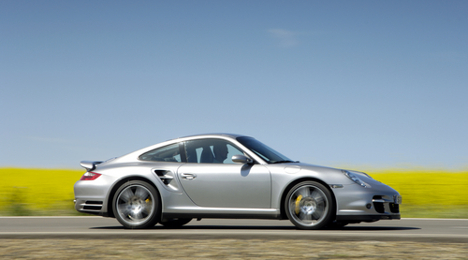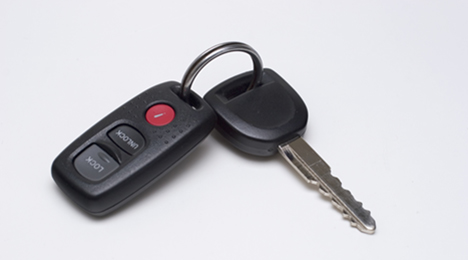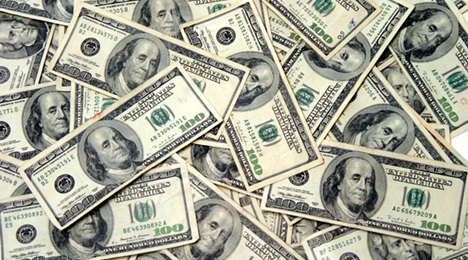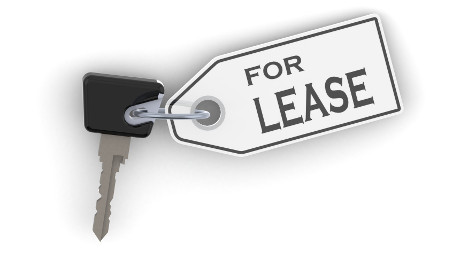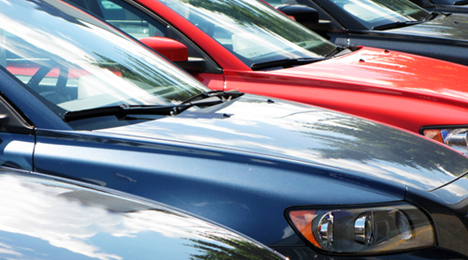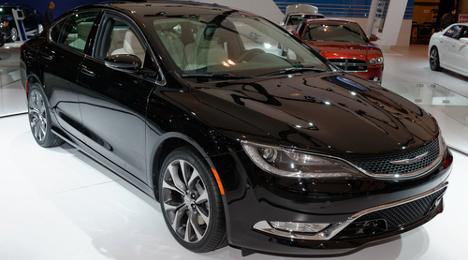Black, white, or somewhere in-between — according to Swapalease.com, roughly 8 out of 10 of the vehicles in its car lease marketplace fall into that category.
The colors, including various grays and silvers, have proliferated in recent years, far outpacing the blues, reds and other colors that used to fill a far larger portion of the roadways.
Swapalease data, which dates back to the company’s inception in late 1990s, continues to reflect on the dominance of black in the leasing market.
Nearly a third – 31.4 percent, to be exact — of vehicles in its system are black. White is the second most popular choice, at 19.6 percent, trailed by silver (13.6 percent), dark gray (9.1 percent) and gray (6.5 percent) — equaling up to 79.9 percent of all vehicles in the Swapalease system.
“Red and blue were much more prominent in the Swapalease.com marketplace in the early and mid-200s, but since around 2005 the popularity of grayscale cars and trucks began to emerge,” said Scot Hall, the company’s executive vice president. “If anything, silver led the grayscale renaissance, but since the recession, varying forms of exotic grays have become more popular with drivers and car shoppers.”
The current market’s grayscale dominance continues from last year, where 76.5 percent of the marketplace consisted of monochromatic colors.
The first color outside of the grayscale to pop into Swapalease’s top 10 was red, making up 5.2 percent of its vehicles, followed by blue (3.6 percent), dark blue (2.6 percent), brown (1 percent) and dark red (1 percent).
To put those numbers in perspective, a PPG Industries release near the end of last year showed that white was the most popular color for new vehicles in 2014, both nationally and globally, making up 23 percent of North American vehicles and averaging nearly 30 percent on every other continent in the world. Black (18 percent), gray (16 percent) and silver (15 percent) followed white in North America, followed by red (10 percent).
“Car manufacturers across the world are continually seeking new ways to create a unique appearance for models and vehicle brands,” Jane Harrington — PPG manager, color styling, automotive OEM coatings — said in the news release. “As color selection takes place two or three years in advance of a model year, it is important for auto makers to combine color popularity with global consumer trends.
“Today, automotive manufacturers can choose from a broad array of colors as well as a wide assortment of variations of conservative hues such as white, silver, black and gray, and distinct effects such as micas, glass flakes, fine bright aluminum and hue-shifting pigments.”
Better than four out of five drivers are willing to consider getting a used-vehicle lease that was 3 years old, according to a study released by Swapalease.com.
Specifically, Swapalease conducted an online survey of 2,500 drives in November and found that 82 percent are willing to at least mull over this option.
Granted, there was some concern expressed: 55 percent indicated the biggest concern they have with a used lease is the warranty/maintenance. Swapalease executive vice president Scot Hall points out in the analysis that most of these cars may be included in similar warranty programs as certified pre-owned vehicles with additional warranty/maintenance perks.
Familiarity also appears to be somewhat of a concern, as the company noted that, “58 percent of respondents said they would only lease used vehicles or consider it more if the option was widely available over the last several years.”
Most men said that not knowing where to get a used lease was the top reason for not going this route. Women, meanwhile, most often said that either the price on a used lease wouldn’t be low enough or they were concerned with the vehicle’s condition.
Sharing more gender data, Swapalease noted that the majority of women would put BMW, Honda or Lexus on their used-lease consideration lists; most men, meanwhile, cited Audi, BMW and Lexus.
As far as segments go, women favored hybrids, sedans or SUVs; men favored luxury vehicles, sports sedans or SUVs.
When it comes down to finances, roughly a third of respondents said $280 was an ideal monthly payment zone. Hall suggested that is a realistic level, assuming the residuals on a typical sedan with an original MSRP of $30,000. As for down payments, about half would agree to pay $500 to $1,500.
Last year, Hall spoke with Auto Remarketing in detail about what he believes the benefits to be of used-car leasing.
The fact that lease penetration rates have pushed towards the 30-percent range in recent months is “one of the key drivers” to such strong new-car sales, Kelley Blue Book senior analyst Alec Gutierrez said in a conference call with the media on Monday.
But what are consequences of such sky-high leasing rates, coupled with the potential for an increase in interest rates and the possibility used prices will come down from their lofty peaks? Not to mention, what should we make of current incentive spending?
As it stands, the market is showing low interest rates, plus what Gutierrez called “incredibly strong” residual values. These two factors have fueled leasing rates, which in turn, have helped lift overall new-car sales.
“I think you look at one of the key drivers of industry sales this year — and this is for utilities, small cars, luxury cars, you name it — and it’s really been leasing,” Gutierrez said.
“I know for the last several months, we’ve been trending closer to 29- to 30-percent lease penetration rates, and that’s only made possible by the fact that we have such historically low interest rates coupled with a historically high used-car market,” he added.
Gutierrez acknowledges that raising the interest rate is something the Federal Reserve “tends to shy away (from)” to avoid putting “undue stress on the economy,” and that it’s also something that has been bandied about the past couple years.
“But if interest rates start to press up and/or the used-car market takes a bit of a hit — which we expect to see in the next couple of years with the type of lease activity that we have seen — that’s where you could potentially see some downward pressure on sales, on demand, because with ATPs as high as they are, you lose some of those options that will help you to offset those rising transaction prices,” he said.
CNW Research addressed a similar notion in a Special Forecast Issue of its Retail Automotive Summary released Wednesday.
The firm is forecasting 17.12 million new-car sales for 2015, but that may come with a price.
“For the industry to hit 17.12 million units, however, will require a significant boost in incentive spending on top of new models,” CNW president Art Spinella said in the report. “The sales gains and conversion of intenders to buyers can be traced to a booming lease effort in the middle to late 1990s and early 2000s.
“CNW calculates that it was also a time the industry, in a single year, lost more than $10 billion because of inflated residual values. The past two years have seen a similar boost in incentives, especially in 2014, with more than 95 percent of all models offered having some significant dealer or consumer enticement,” he added. “There was a huge bulge in the number of vehicles sold that had an incentive attached in calendar-years 2002-2005 as the industry attempted to dig its way out of the leasing quagmire.
“And while the decline in the percentage of vehicles covered by an incentive diminished in ’06, the trend line upward continued.”
When it comes to transaction prices, CNW believes that increased incentives and higher trade-in values from dealers will drive down the ratio of transaction price-to-MSRP from 84 percent to 81 percent.
Looking deeper into incentives, ALG said in the January-February 2015 US Industry Report that current incentives, as measured in the latest edition, are at $2,608 per vehicle, up $18 from where they were from the previous edition. ALG’s 36-month incentive forecast is at $2,928 (up $5), leading to a 0.02-percentage-point downward impact on residuals.
Of course, incentives are just one of many factors impacting residuals. ALG said in a snapshot of the report, that when looking at residual forecasts, “Total change (including expected declines and economic outlook) was -0.7 percentage points on average in the 36-month term, with some variation among segments.”
The analysis added: “This edition is slightly more negative than the January/February 2014 edition, when supply impacts were not as severe.”
The complete report includes a digest of how varying factors impact the residual forecast.
Swapalease.com reported on Wednesday that lease credit approvals during November continued to increase, fueling even more end-of-year momentum for lease applications and vehicle exchange rates.
Site analysts noticed November’s reading marked the second-highest monthly lease approvals rate, coming in at 84.2 percent. They recapped that the August rate was 85.7 percent.
Swapalease explained that the monthly approvals rate was driven by early holiday lease campaigns and offers with a rising number of lessees exchanging vehicles from brands such as Chrysler, Mazda, Jeep, GMC, Ford, Buick and Chevrolet.
Among luxury brands, Lexus saw its typical seasonal jump in exchange requests, according to the site.
Year-to-date, Swapalease.com has recorded a lease credit approvals rate of 69.7 percent, the highest year-to-date rate since January when 2014 started out with a 70.6 percent approval rate.
Swapalease executive vice president Scot Hall pointed out that lease approvals are expected to maintain their recent momentum driven largely by the consumer’s appetite to leverage lease finance options in the showroom.
According to Experian, more than 29 percent of total vehicle sales were written as leases during the third quarter. With many auto industry insiders predicting nearly 17 million cars sold next year, Swapalease.com believes the lease penetration rate will rise above 30 percent in 2015.
“Lease deals will continue to rise over the next several months as car sales increase and used car values maintain their strong retention rates,” Hall said.
“What’s more, leasing is gaining popularity among millions of consumers who now view their car as just another monthly payment,” he added.
Along with offering five recommendations aimed at helping individuals who might be heading to your franchised store showroom, recent analysis by Swapalease.com showed consumers can often get a better lease deal if they opt for a model from the incoming model year, even in December when end-of-year negotiating intensifies.
For example, site officials found that consumers can lease a 2015 Toyota Camry for $293.71 per month, compared to a new 2014 model priced at $319.22.
Swapalease also indicated a 2015 Chevrolet Malibu lease is priced at $246.21 per month, while a new 2014 model is priced at $319.74.
“The reason the 2015 model is cheaper in a lease environment has everything to do with the residual, which in most cases will be higher than that of the 2014,” site officials said. “A higher residual value equates to a lower monthly payment for the consumer.”
With that thinking in mind, Swapalease.com shared five end-of-year lease negotiation strategies franchised store personnel might see consumers leverage as the year closes:
1. The price of the vehicle (known as the “cap cost”) is the primary point of negotiation on a lease. In much the same way consumers negotiate the price of the vehicle when financing, the site said shoppers should do so in lease environments as well. Additionally, down payments (“cap cost reduction”) and existing vehicle trade-ins can also play into sales price negotiation.
2. Site officials indicated the residual of the vehicle can be adjusted depending on the amount of miles a person needs each year. Lower mileage requirements amount to a higher residual/lower payments, and higher mileage requirements mean the opposite.
3. Swapalease.com noted the interest rate, or “money factor” may also be negotiated in many circumstances. However, credit is extremely important in a lease environment, so the better your credit, the stronger your chance for negotiating a better money factor on the lease.
4. Site officials emphasized that consumers should ask plenty of questions during the negotiation stage and be sure to have dealers explain in detail how they arrived at a certain monthly payment.
5. If shopping for a lease in December, Swapalease emphasized that consumers should be sure to have the dealer do a side-by-side comparison of a new 2014 model lease versus a 2015 model lease, especially for the same vehicle make and model. In most cases the 2015 model should come with a lower payment, but this is not always the case, according to site officials.
Once final tallies are sorted, lease penetration figures for November are likely to shake out at a level similar to recent months, according to Kelley Blue Book senior analyst Alec Gutierrez, who said in a sales day conference call on Tuesday that leasing could end up with a share as high as 28 percent to 30 percent for the month.
And while that current lease penetration level isn’t cause for alarm, too much more escalation in leasing could put pressure on the used-car market.
“That’s pretty consistent with what we saw throughout the third quarter and (shows) the trend of increasing lease penetration rates that we’ve seen,” Gutierrez said, referring to the aforementioned prediction for November lease penetration.
“I wouldn’t say we’re at a point yet where the industry is at an unhealthy level of leasing, but I would argue that I don’t necessarily think it would be a good thing for us to continue to press much higher,” he said. “To me, it seems like if we’re at a 35 or a 40-percent lease penetration rate, that’s definitely too high; that’s a lot of risk we’re running as that sort of volume comes back on the back-end at wholesale auctions in a couple years.
“We already know that there’s going to be a pretty significant ramp-up in inventory hitting auctions in 2016 and 2017 related to just what was done this year at current rates,” Gutierrez added. “So, I would argue that we shouldn’t push too much higher, but we’re not quite at that point of no return just yet.”
Today’s monthly payment driven consumers are keeping leasing levels on an upward trajectory, as Experian Automotive showed in its latest State of the Automotive Finance Market report.
Analysts found that leasing accounted for 29.1 percent of all new-vehicle financing in the third quarter, up 7.1 percent from a year ago.
And the latest level is more than double the reading Experian spotted five years ago. At Q3 of 2009 when finance companies still weren’t generating much lease paper, the level stood at 14.24 percent before spiking to 22.75 percent a year later.
Predominantly, most of the leasing contracts are with prime customers (48.93 percent), and Experian indicated the average consumer credit score for a new-model lessee came in at 718 during the third quarter. But analysts found that leases booked with customers who fall into the categories of non-prime (17.16 percent) and subprime (6.72 percent) also edged higher compared to a year ago.
Experian’s latest data showed three Honda models led the way in market share for the most new-vehicle leases in Q3. Here are the top 10:
Honda Civic: 3.7 percent
Honda Accord: 3.7 percent
Honda CR-V: 3.1 percent
Toyota Camry: 2.8 percent
Toyota RAV4: 2.6 percent
Toyota Corolla: 2.5 percent
Ford Escape: 2.3 percent
Nissan Altima: 2.0 percent
Ford Fusion: 2.0 percent
Jeep Grand Cherokee: 1.6 percent
The average payment consumers are making on those units and other vehicles leased in Q3 dipped below $400, settling at $397. Average term came in at 35 months as 69.94 percent of leases originated in Q3 contained terms ranging from 25 to 36 months.
“Car buyers tend to shop with a monthly payment in mind. As a result, we are continuing to see them turn to leasing as strategies to keep payments down and make vehicles more affordable,” said Melinda Zabritski, senior director of automotive finance for Experian.
“As car values continue to reach new heights, these insights will help dealers, lenders and consumers become more aware of the options available to them to keep people buying cars, all while staying within their budgets,” Zabritski continued.
Also of note, leasing of new vehicles continues to dominate, as 96.7 percent of the contracts in Q3 were connected with a new model while the remaining 3.3 percent constituted used-vehicle leasing.
Swapalease.com reported lease credit approvals on its website rebounded during October. The rate improved to 74.1 percent compared with 64.5 percent in September.
Site officials indicated roughly three out of every four lease applicants were approved in October, an important indicator given the continued popularity of car and truck leases.
Year to date, Swapalease.com has recorded a lease credit approval rate of 68.6 percent, just shy of the 70 percent rate that is considered normal in the marketplace. Over the last three months, approximately 73.4 percent of all lease applicants have been approved for lease exchanges, according to Swapalease.com.
The site emphasized the timing of the lease credit approvals rate is interesting given the proximity to the holiday shopping season and end-of-year deals.
Swapalease.com executive vice president Scot Hall explained consumers are expected to rely on credit for purchases as the end of 2014 nears. Hall projected online holiday shopping is expected to reach $89 billion in sales this year and up 13 percent from a year ago.
Hall added auto sales are expected to finish the year strong at approximately 16.1 million units sold, up from 15.6 million in 2013.
Swapalease.com anticipates mixed results regarding lease credit approvals in November and December, when vehicle lease shoppers increase their appetite for entry-level luxury models given a boost from holiday advertising campaigns.
The site also pointed out the marketplace has also experienced a larger number of lease credit declines in 2014 from vehicle shoppers with less-than-stellar credit profiles hoping to secure a subprime lease finance package.
“Credit is the lifeblood of leasing and subprime profiles have a more difficult time getting approved by the bank,” Hall said.
“We will be keeping a watchful eye out this holiday season, particularly as car shoppers in all credit profiles look to take over a luxury lease inspired by the ‘December To Remember’ holiday campaigns,” he went on to say.
Wantalease.com has released a list of 16 popular vehicles that have November lease deals for less than $200 per month. According to the site, the current selection of lease deals below the $200 mark is the largest variety of makes and models at the price point all year.
According to Scot Hall, Wantalease.com’s executive vice president, making lease deals more affordable seems to be the current industry trend that more and more manufacturers are competing in.
“Tesla has made headlines recently with its new lease program, but the truly impressive part of car leasing is now the depth and variety of attractive lease offers for many makes and models,” Hall said. “Leasing has traditionally been thought of as an alternate form of finance for a luxury vehicle, but today we’re seeing the largest variety of deals for cars, trucks, SUVs and everything in between.”
The following list of vehicles from Wantalease.com are vehicles you can promote to your customers this month if they’re looking to lease with a tight monthly budget and can afford a downpayment:
Compact Cars:
- Chevrolet Cruze LT
- Nissan Sentra SV
- Ford Focus SE
- Honda Civic LX
- Toyota Corolla LE
Entry-Midsize Cars:
- Volkswagen Jetta 2.0 MT
- Chrysler 200 Limited
- Chevrolet Malibu LT
- Ford Fusion SE FWD
Midsize Cars:
- Honda Accord LX
- Nissan Altima 2.5 S
- Volkswagen Passat 1.8T S
Large Pickup & Small SUVs:
- Chevrolet Silverado 1500 4WD Double Cab LT
- Ford Escape
- Chevrolet Equinox 2WD LS
- Nissan Rogue S FWD
Each of these deals has specific term, miles per year, downpayment and monthly payment amounts, which can be found on their corresponding manufacturer’s websites.
Back in October, Tesla Motors made its Model S lease offer even more enticing to potential buyers with a deal through US Banks that lowered the cost of leasing and gave shoppers the option to return the vehicle after three months.
Consequently, potential lessees can now use the three-month lease escape as a type of long-term rental.
Chief executive officer Elon Musk calls this the “happiness guarantee,” as lessees are able to return the vehicle with no penalties and with future payments waived.
That said, there is one catch. Musk said if buyers choose to bring the leased vehicle back after three months, they are disqualified from immediately leasing another Tesla; he hasn’t specified how long the enforced wait will be.
Scot Hall, executive vice president of leasing marketplace Swapalease.com, offered his own analysis on this development, predicting that Tesla lessees may take advantage of “an early out” — just maybe not as soon three months.
After taking a look at the luxury lease exchange trends on Swapalease.com, Hall asserted most Tesla vehicles will be transferred within the first four to eight months of leasing.
“The fact that many will look to exchange a Tesla in such a short amount of time doesn’t mean it’s an unsuccessful lease program,” Hall said. “In fact, it might be the opposite. A healthy exchange rate on a lease keeps buyer demand healthy at all levels of the automotive channel.”
According to site data, all vehicles on Swapalease.com average an exchange window during the first year to 14 months of vehicle possession.
Hal took a look at some of the vehicles similar to the Tesla Model S — such as the BMW 7-Series or Mercedes-Benz S — and these numbers go down a bit.
For luxury lesees, the site shows these drivers look to exchange within the first 10 to 12 months of possession.
Hal predicts this rate will shorten to four to eight months for the Tesla Model S “because of heightened interest in upgrading, and to avoid the three-month return ‘no-lease’ penalty imposed by Tesla.”
Swapalease.com’s predictions come largely down to the assertion many Tesla drivers will be looking to upgrade their vehicle/technology sooner than other luxury makes.
And Hall is drawing from experience, as well. Swapalease.com recently received its first Tesla Model S in its lease transfer marketplace, and the vehicle was listed after just four months of driving.
But these lessees most likely won’t have any trouble transferring the vehicle, as demand remains high. Demand for the vehicle is healthy, Hal says, as consideration is 350 percent higher than that of its other luxury competitors on the site.
Tesla management is also offering a buy-back guarantee for the Tesla Model S, through which the automaker is giving Tesla Model S owners the option to return the car after three years and recover 45 to 50 percent of its sticker price.
This program, as well as the company's new consumer leasing branch, may serve to source Tesla's future CPO program.

